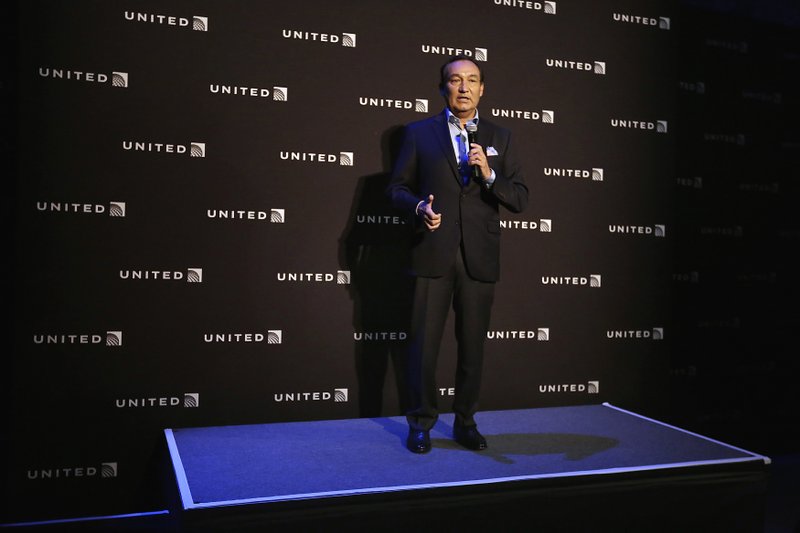NEW YORK -- The viral video of a ticketed passenger being dragged off a United Airlines flight is only the latest example of bad behavior to mar the public image of a corporation thanks to social media.
In February, Uber came under fire after a driver posted video of Chief Executive Officer Travis Kalanick berating him. Earlier, a Comcast technician was shown in a video sleeping on a customer's couch, and an audio recording chronicled one man's herculean efforts to drop Comcast service; they are among the embarrassing customer complaints that ultimately forced improvements. FedEx had to respond after video showed a driver carelessly throwing a package with a computer monitor over a home's front gate.
Beyond the corporate sphere, smartphone videos of police brutality have prompted protests and investigations.
Not long ago, corporations' flubs might have gotten a mention on the local news at most, then quickly disappeared. But smartphone cameras and social media have democratized information and shifted power to consumers. Companies can no longer sweep complaints under the rug.
"That's something a lot of companies just don't get," said Paul Argenti, a professor of corporate communications at Dartmouth's Tuck School of Business. "Companies still operate as if they can hide things and make believe something didn't happen."
Companies can't eliminate such gaffes entirely, but they can learn from past blunders to minimize the damage.
It starts with training. Employees need to be ready to react when a situation escalates -- and companies should emphasize that anything employees do could be recorded. That's especially true for transportation, fast-food and other companies with a lot of employees who interact directly with large numbers of customers.
Running through hypothetical scenarios helps.
"Have a couple things planned, what we should do if 'x' happens and what we should do if 'y' happens," said Lakshman Krishnamurthi, a Kellogg School of Management marketing professor.
On-site employees need to be given more power to respond to avoid worsening an incident, especially one that might be recorded. In United's case, for instance, even if employees were following the rules for seeking volunteers to give up seats, they should have been able to read the situation and increase the financial incentives for volunteers rather than drag a passenger off a flight.
"You need rules, but you need to be flexible and adapt," Argenti said.
Once a video is posted on a social media site, the standard public relations-crisis response remains the same as it always has: Work swiftly to correct the situation in the eyes of the public.
"Apologize, talk about why it happened, and say it will never happen again," Argenti said.
United CEO Oscar Munoz eventually apologized, but not for two days and after first blaming the customer and airport security. And once a video goes viral, companies have to cede control of the narrative. "When the video is out there, don't try to countermand what the video says," said Herman Leonard, a professor of business administration at Harvard.
The passenger dragged from the United Express flight lost two front teeth and suffered a broken nose and a concussion, one of his lawyers said Thursday, accusing the airline industry of having "bullied" its customers for far too long.
"Are we going to continue to be treated like cattle?" attorney Thomas Demetrio asked Thursday during a news conference.
Dr. David Dao has been released from a hospital but will need reconstructive surgery, Demetrio said, appearing alongside one of Dao's children. Dao was not there.
The 69-year-old physician from Elizabethtown, Ky., was forcibly removed from a plane Sunday at Chicago's O'Hare Airport after refusing to give up his seat on the full flight to make room for four airline employees.
In the past, companies had hours or days to respond to a crisis. Now, companies must respond immediately, before a scandal spins out of control on social media.
For example, when Domino's Pizza employees posted a YouTube video of workers defacing sandwiches in 2009, the employees were quickly fired, the store was inspected and the CEO apologized. That helped mitigate some, if not all, of the damage.
Similarly, after TV cameras shot video of rats scurrying through a KFC/Taco Bell in Manhattan, parent company Yum closed 10 of its New York City restaurants and hired a leading rat expert to review the company's standards.
Angry United Airlines customers can now vent their fury at Munoz's pocketbook.
United ties about $500,000 of the CEO's annual bonus to customer satisfaction questionnaires.
Each day, United collects about 8,000 customer surveys on items such as legroom and the quality of in-flight coffee. Fliers were already pretty disgruntled. In 2016, researcher J.D. Power rated United dead last of traditional North American carriers.
Munoz won't be begging on street corners if he's docked the half-million. The CEO has 2016 target compensation of about $14.3 million, according to his employment agreement. The actual amount for last year is expected to be disclosed by month's end.
Information for this article was contributed by Mae Anderson, Don Babwin and Sara Burnett of The Associated Press and Anders Melin of Bloomberg News.
Business on 04/14/2017
